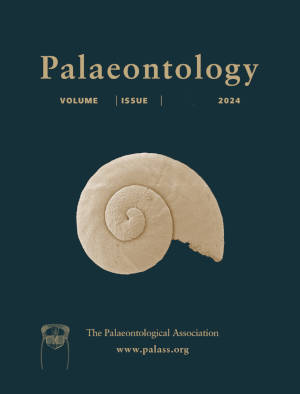Article: Ecological novelty at the start of the Cambrian and Ordovician radiations of echinoderms
Publication: Palaeontology
Volume:
67
Part:
1
Publication Date:
2024
Article number:
e12688
Author(s):
Philip M. Novack-Gottshall, Jack Purcell, Ali Sultan, Isa Ranjha, Bradley Deline, and Colin D. Sumrall
Abstract
Abstract The Cambrian and Ordovician radiations marked the origins of all major echinoderm clades and established their Phanerozoic ecological blueprint. Recent claims of modest innovation of early echinoderms and other animals suggest constraints on novelty during the origins of phyla. Here, we document the life-habit richness, body size, tiering, habitat usage, mobility, diet and foraging habits of 366 Cambrian–Ordovician echinoderm genera across a time-scaled phylogeny to identify the timing and impact of novelty. Most early echinoderms were sedentary, filter-feeding microbivores, and their body sizes, diets and modes of locomotion were largely unchanged through time, despite major volatility in taxonomic composition. Cambrian echinoderms lived close to the seafloor, with stylophorans first evolving semi-infaunality. Many Ordovician echinoderms lived farther from the seafloor, with more complex filter-feeding organs and tiering structure, often using other organisms as substrates. Mobile carnivores and mass-feeders emerge then, too, across diverse asterozoans and echinozoans. Most of these novelties coincide with the origins of individual clades during the early and late Cambrian (Terreneuvian/Series 2 and Furongian), and 10–20 million years pass before most become ecologically important. Life-habit evolution within most taxa involved new variations in these traits, with crinoids and asterozoans better able to shift strategies. The Ordovician radiation records more new variability in pre-existing Cambrian life habits rather than radical re-invention, with important novelties (like mobile carnivory and mass-feeding, increased height off the seafloor, and biotic substrates) becoming ecologically more impactful. Taxa with these strategies were those best able to capitalize on the newly heterogeneous Ordovician world.
